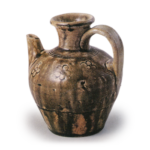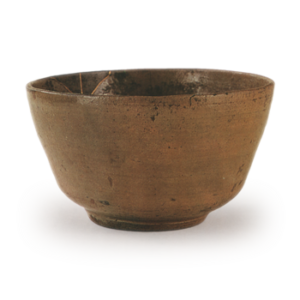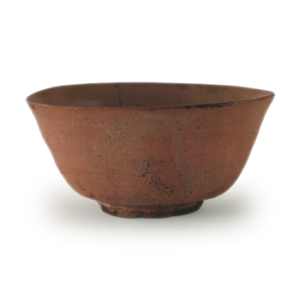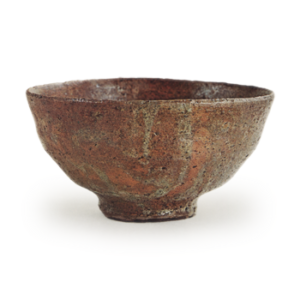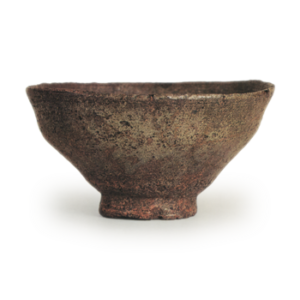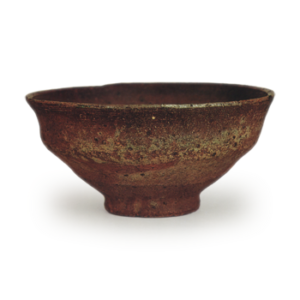
Excavated from Tengama Kiln, Seto City, Aichi Prefecture, Japan
14th century
Height 12.9cm, mouth diameter 5.0cm, body diameter 10.6cm, bottom diameter 6.0cm
This long-necked, flat-bottomed vessel has an upward-facing mouth on the shoulder of the body and a wide handle from the base of the head to the shoulder, and is also called a “water bottle” or “water pouring vessel. This type of vessel was produced from the middle of the Kamakura period to the beginning of the Muromachi period, and is one of the main types of Kosedo vessels of the Kamakura period. Needless to say, it is a type of celadon or white porcelain of the Sung dynasty and was modeled after them, but there are various types of mouthpieces made of different materials. This piece is made of grayish-white clay, and is shaped and molded by rolling up corded clay. The sleeve is made of iron, but it contains a large amount of gray feldspar, giving it a bluish-black color. This piece is from the Nanbokucho period, and iron glaze of this color tone was often used during this period. This is one of the finest examples of iron-glazed water jars from the peak period. We know from “Kasuga Gongen Kenki-e” and other works that this type of pitcher was used as an everyday eating and drinking vessel.

